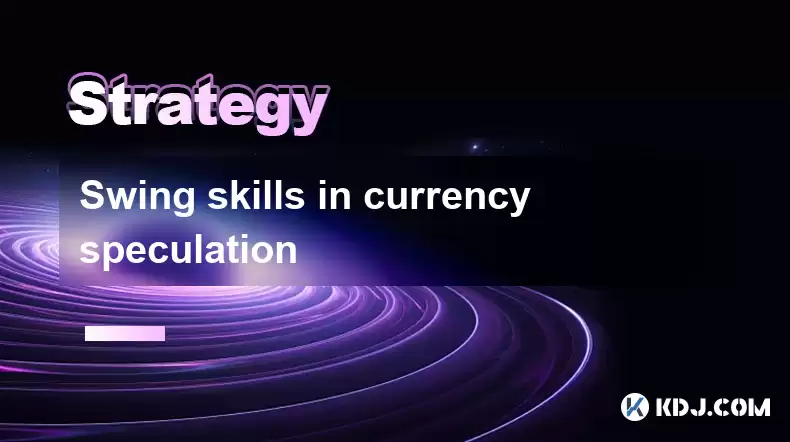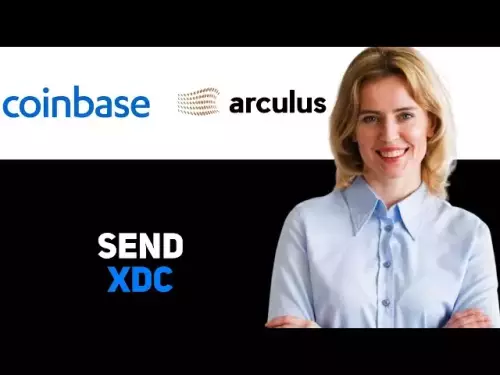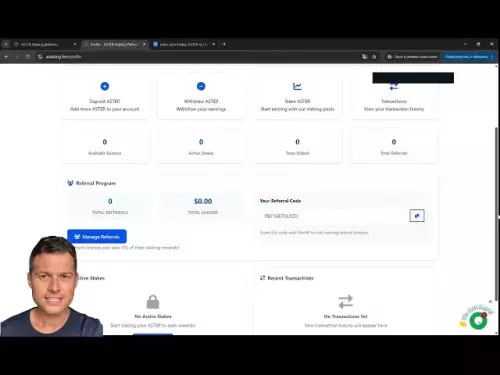-
 bitcoin
bitcoin $111375.742210 USD
-8.60% -
 ethereum
ethereum $3780.311592 USD
-13.98% -
 tether
tether $1.001299 USD
0.07% -
 bnb
bnb $1093.375857 USD
-13.01% -
 xrp
xrp $2.339375 USD
-16.91% -
 solana
solana $185.029017 USD
-16.69% -
 usd-coin
usd-coin $1.000230 USD
0.04% -
 tron
tron $0.319531 USD
-5.16% -
 dogecoin
dogecoin $0.190791 USD
-23.59% -
 cardano
cardano $0.638663 USD
-21.82% -
 ethena-usde
ethena-usde $0.998483 USD
-0.20% -
 hyperliquid
hyperliquid $37.741486 USD
-14.68% -
 chainlink
chainlink $17.229851 USD
-22.17% -
 stellar
stellar $0.316546 USD
-16.74% -
 bitcoin-cash
bitcoin-cash $507.861193 USD
-13.18%
Swing skills in currency speculation
Swing traders identify short-term price swings in cryptocurrencies using technical analysis and establish stop-loss and take-profit levels to manage risk and optimize returns.
Jan 08, 2025 at 07:47 am

- Understanding Swing Trading
- Identifying Swing Trading Opportunities
- Establishing Stop-Loss and Take-Profit Levels
- Managing Risk and Position Size
- Psychological Strategies
Swing trading involves profiting from short-term to medium-term price swings in cryptocurrencies. Here are the essential steps:
Understanding Swing Trading- Swing Trading Duration: Swing trades typically last from a few days to several weeks.
- Target Profits: Swing traders aim for profits of 5-20%, depending on market conditions.
- Risk Tolerance: Swing trading involves higher risk than long-term investing, requiring traders to carefully manage their positions.
- Technical Analysis: Swing traders use technical indicators and chart patterns to identify potential trading opportunities.
- Support and Resistance Levels: Support and resistance levels indicate where prices may bounce or reverse, offering entry and exit points for swing trades.
- Market Trends: Traders follow market trends using indicators like moving averages to determine the overall direction of price movements.
- Stop-Loss Levels: A stop-loss order is placed at a predetermined price below (or above) the entry point to limit potential losses.
- Take-Profit Levels: A take-profit order is placed at a predetermined price above (or below) the entry point to capture profits.
- Adjusting Levels: Stop-loss and take-profit levels can be adjusted as the trade progresses to optimize returns.
- Position Size: Swing traders determine their position size based on their risk tolerance and account capital.
- Risk-Reward Ratio: Traders aim for a positive risk-reward ratio, meaning the potential profit should outweigh the potential loss.
- Hedging: Advanced traders can use hedging strategies to reduce overall risk, such as using futures contracts or options.
- Patience: Swing trading requires patience and discipline, as profits may not materialize immediately.
- Emotional Control: Traders must control their emotions and avoid letting fear or greed influence their decisions.
- Continuous Learning: Swing trading strategies should be continuously refined and adapted based on changing market conditions.
Q: What are some successful swing trading strategies?A: Popular swing trading strategies include RSI divergence, candle patterns, and trend following.
Q: How do I avoid getting stuck in losing trades?A: Establish clear stop-loss levels and stick to them, even if it means taking a small loss. Adjust your strategy if you find yourself repeatedly losing trades.
Q: What are the common mistakes made by swing traders?A: Common mistakes include trading with too much leverage, not setting stop-loss orders, and being influenced by emotions.
Q: Is swing trading suitable for beginners?A: While swing trading can be profitable, it requires a good understanding of market dynamics and risk management. Beginners should consider starting with a smaller account size and using a demo account to practice their strategies.
Disclaimer:info@kdj.com
The information provided is not trading advice. kdj.com does not assume any responsibility for any investments made based on the information provided in this article. Cryptocurrencies are highly volatile and it is highly recommended that you invest with caution after thorough research!
If you believe that the content used on this website infringes your copyright, please contact us immediately (info@kdj.com) and we will delete it promptly.
- Bittensor (TAO): Super Bullish Signals Point to Potential 2x Rally
- 2025-10-11 10:25:12
- Silver Price Correction: Navigating the Dip & Identifying Key SEO Keywords
- 2025-10-11 10:25:12
- MoonBull: The Crypto Meme Coin Promising 1000x Gains?
- 2025-10-11 10:30:01
- Crypto Payroll Revolution: Stablecoins, Altcoins, and the Future of Salary Payments
- 2025-10-11 10:30:01
- Decoding Crypto Trends: XRP's Bitcoin Dream, BlockDAG's Rise, and the PayFi Revolution
- 2025-10-11 10:30:01
- Amina Bank & Polygon: Institutional Staking with a Sweet 15% Yield
- 2025-10-11 10:30:15
Related knowledge

Practical parameter settings for a Bitcoin multi-timeframe moving average system
Sep 18,2025 at 10:54pm
Optimizing Timeframe Combinations for Bitcoin Trading1. Selecting appropriate timeframes is crucial when building a multi-timeframe moving average sys...

How can I filter out false breakouts in Dogecoin high-frequency trading?
Sep 22,2025 at 01:00am
Understanding False Breakouts in Dogecoin Trading1. A false breakout occurs when Dogecoin's price appears to move beyond a defined support or resistan...

Techniques for identifying tops and bottoms in the Bitcoin on-chain NVT model
Sep 20,2025 at 07:54pm
Understanding the NVT Model in Bitcoin Analysis1. The Network Value to Transactions (NVT) ratio is often described as the 'P/E ratio' of the cryptocur...

What does the surge in open interest in Bitcoincoin futures mean?
Sep 20,2025 at 11:18pm
Understanding the Surge in Dogecoin Futures Open Interest1. A surge in open interest within Dogecoin futures indicates a growing number of active cont...

How can I use the Ethereum USDT premium to gauge market sentiment?
Sep 18,2025 at 11:55pm
Understanding the Ethereum USDT Premium1. The Ethereum USDT premium refers to the price difference between USDT (Tether) traded on Ethereum-based plat...

What should I do if Ethereum staking yields decline?
Sep 20,2025 at 06:18am
Understanding the Causes Behind Declining Ethereum Staking Yields1. The Ethereum network transitioned to a proof-of-stake consensus mechanism with the...

Practical parameter settings for a Bitcoin multi-timeframe moving average system
Sep 18,2025 at 10:54pm
Optimizing Timeframe Combinations for Bitcoin Trading1. Selecting appropriate timeframes is crucial when building a multi-timeframe moving average sys...

How can I filter out false breakouts in Dogecoin high-frequency trading?
Sep 22,2025 at 01:00am
Understanding False Breakouts in Dogecoin Trading1. A false breakout occurs when Dogecoin's price appears to move beyond a defined support or resistan...

Techniques for identifying tops and bottoms in the Bitcoin on-chain NVT model
Sep 20,2025 at 07:54pm
Understanding the NVT Model in Bitcoin Analysis1. The Network Value to Transactions (NVT) ratio is often described as the 'P/E ratio' of the cryptocur...

What does the surge in open interest in Bitcoincoin futures mean?
Sep 20,2025 at 11:18pm
Understanding the Surge in Dogecoin Futures Open Interest1. A surge in open interest within Dogecoin futures indicates a growing number of active cont...

How can I use the Ethereum USDT premium to gauge market sentiment?
Sep 18,2025 at 11:55pm
Understanding the Ethereum USDT Premium1. The Ethereum USDT premium refers to the price difference between USDT (Tether) traded on Ethereum-based plat...

What should I do if Ethereum staking yields decline?
Sep 20,2025 at 06:18am
Understanding the Causes Behind Declining Ethereum Staking Yields1. The Ethereum network transitioned to a proof-of-stake consensus mechanism with the...
See all articles










































































